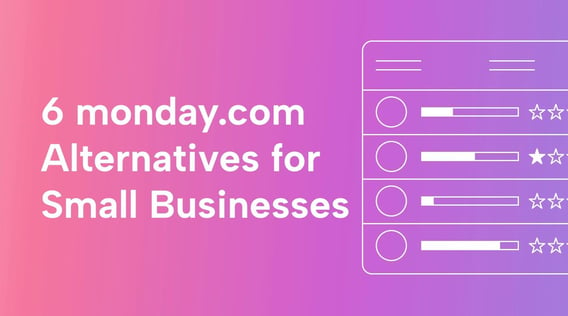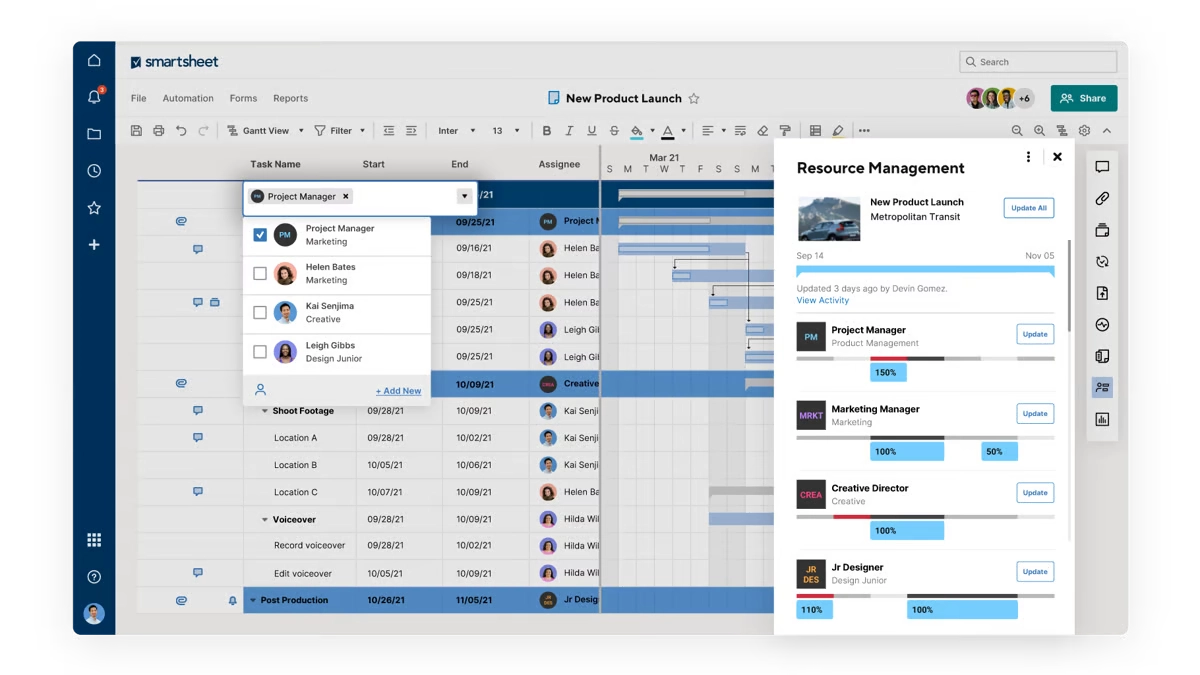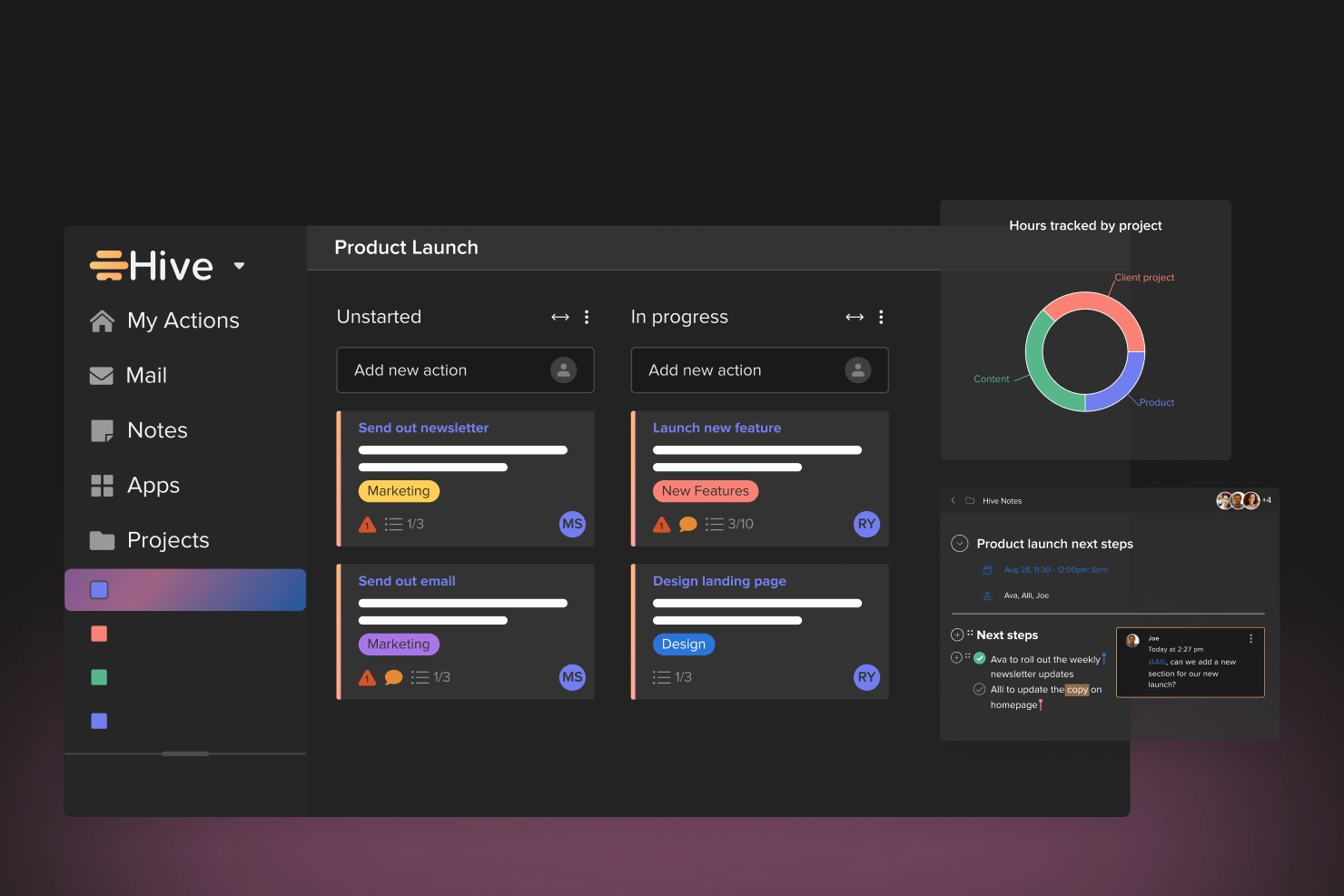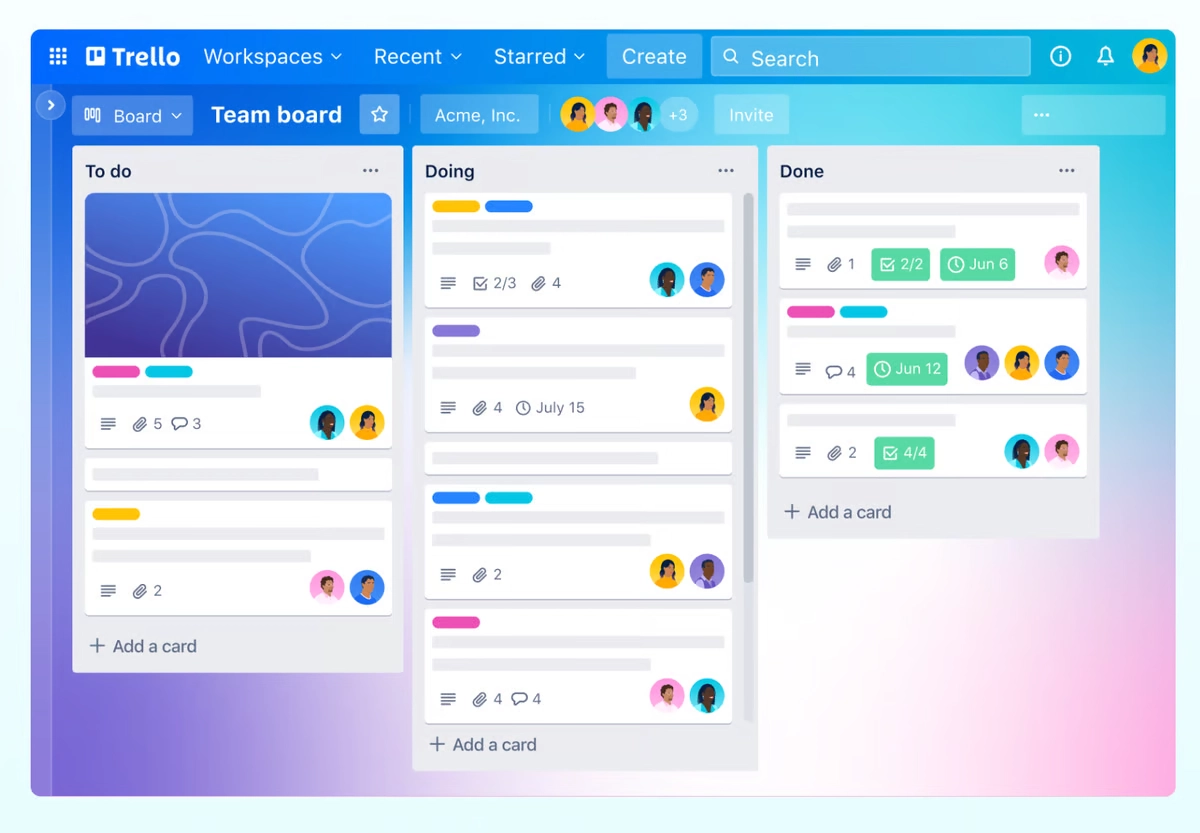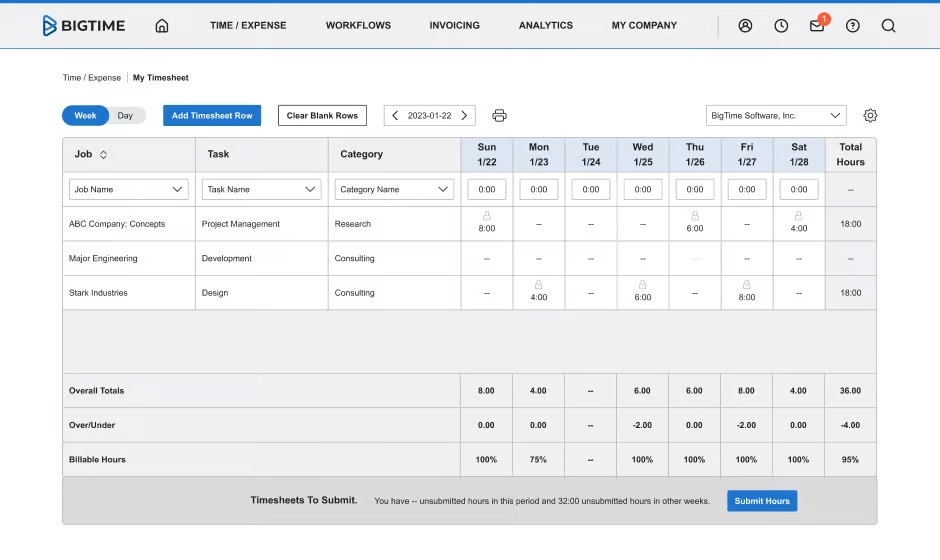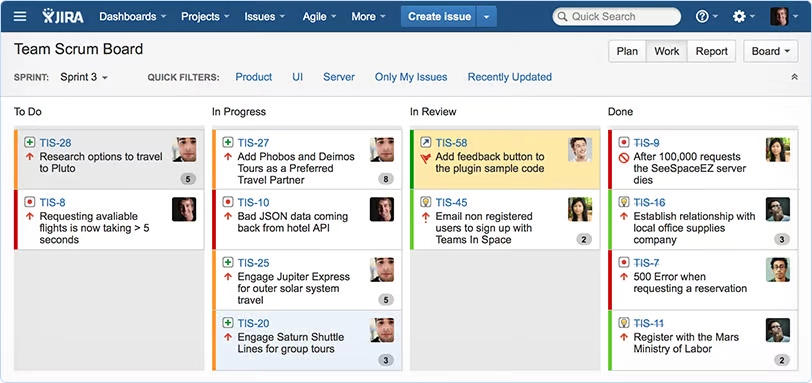As your small business grows, it becomes harder to remember and manage all the tasks you need to do to complete a project on time.
If you’re still managing your calendar manually or sending back-and-forth emails with your team, there’s a strong chance that important details and changes will slip through the cracks.
Work management tools give you full visibility to view and discuss everything you need to do in one place.
But with so many work management platforms on the market, how do you pick one that works well for small businesses? After all, tools like monday.com can feel pricey and overloaded with unnecessary features.
Let’s explore why tools like monday.com don’t always work well for small businesses and then dive into some better alternatives to streamline your workflows without over-complicating your day.
How do small businesses benefit from work management tools?
Work management tools help small businesses thrive and manage projects and everyday tasks to streamline operations.
With a powerful tool behind you, you can improve remote collaboration and make more informed decisions on optimizing workflows.
Here’s how.
1. Plan your team’s schedules better
Two-thirds of companies admit to having delays in project deliveries. A third of respondents say the problem lies with unrealistic deadlines.
Work or project management tools help you optimize and manage your team’s schedules so everything gets done on time.
These tools enable you to view your team’s availability in real time and compare this to the urgency of each task. This helps you prioritize work and set realistic deadlines that work with the resources you have.
It's also easy to track the progress of projects so that if something changes, you can proactively rearrange schedules to accommodate these issues. With tools like Motion, schedules automatically reshuffle if priorities change, so everything’s finished on time without anyone getting overwhelmed.
2. Balance several clients at once
When you consider that almost a third of companies manage more than six projects simultaneously, it’s no wonder deliverables are often late. When you manually juggle lots of projects at once, it’s easy to drop the ball somewhere.
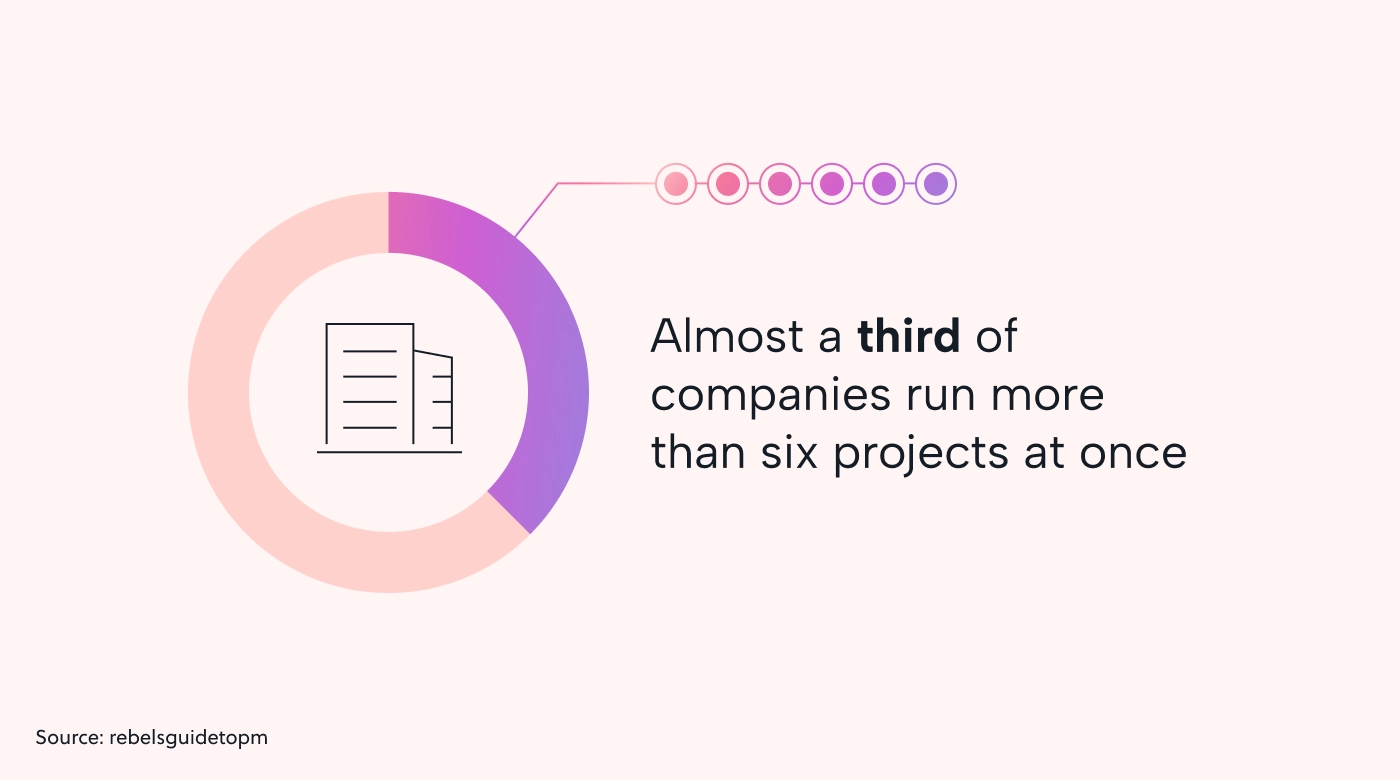
Project management tools offer crucial support as they give you visibility into task timelines and deadlines, allowing you to prioritize based on urgency and availability.
Since you can assign work to team members and communicate about those tasks in the platform, everyone knows what they’re doing and when, improving accountability.
This way, project managers don’t have to hold all this information in their heads. They can manage multiple clients at once on a centralized platform.
3. Communicate more effectively
When you centralize communications, you’ll find fewer conversations get missed.
A work management tool provides a single platform for instructions, discussions, and documents, while automatic updates keep everyone on task and up-to-speed.
Instead of endless email threads and unrecorded dialog, everything’s available in a central location, holding each person accountable for their role.
4. Understand how to optimize workflows
When you’re organizing projects manually, it’s not easy to see where there are bottlenecks in your processes. Without this information, making data-driven decisions to improve workflows is hard.
A work management platform records and analyzes performance and project progress to help you identify bottlenecks and optimize operations.
Why monday.com isn’t always best for small businesses
monday.com is certainly a popular project management tool. But it might not be the ideal fit for small businesses.
The free and low-priced tiers limit the available features. SMBs can’t use their automation capabilities without upgrading to more expensive plans.

Plus, these lower tiers restrict storage. This might be problematic if you run a data-heavy operation as a graphic designer or photographer.
You’ll also find that the project views on the basic plans are also limited. monday.com has an unconventional default interface, and more traditional views like calendar and timeline are reserved for the pricier packages.
This often means learning how to set up new boards before you can get true value from the tool.
But if you want to upgrade to access any of these features, you’ll suddenly find yourself paying for many features you might not need.
For businesses looking to manage tasks and basic workflows, monday.com’s complexity might not be worth the investment.
Top 6 monday.com alternatives to help small businesses manage their workflow
Whether you’re a small office-based business or an SMB with remote teams, a task management tool helps your team focus their efforts in the right places.
Helping you manage to-do lists, communicate about projects, and collate information, a work management platform centralizes operations so everyone’s on the same page.
But for small teams looking to manage simple workflows and handle daily schedules, there’s no need for a heavy-weight tool like monday.com.
Try one of these picks instead.
1. Motion: Best for AI-optimized schedules and workflows
Motion doesn’t just help you get your work tasks in order. It’s an AI executive assistant that automatically handles time management and optimizes workflows, so you don’t have to.
Where conventional tools rely on you to prioritize work and reorganize tasks if things change, Motion’s powerful AI controls your team’s schedules as efficiently as possible.
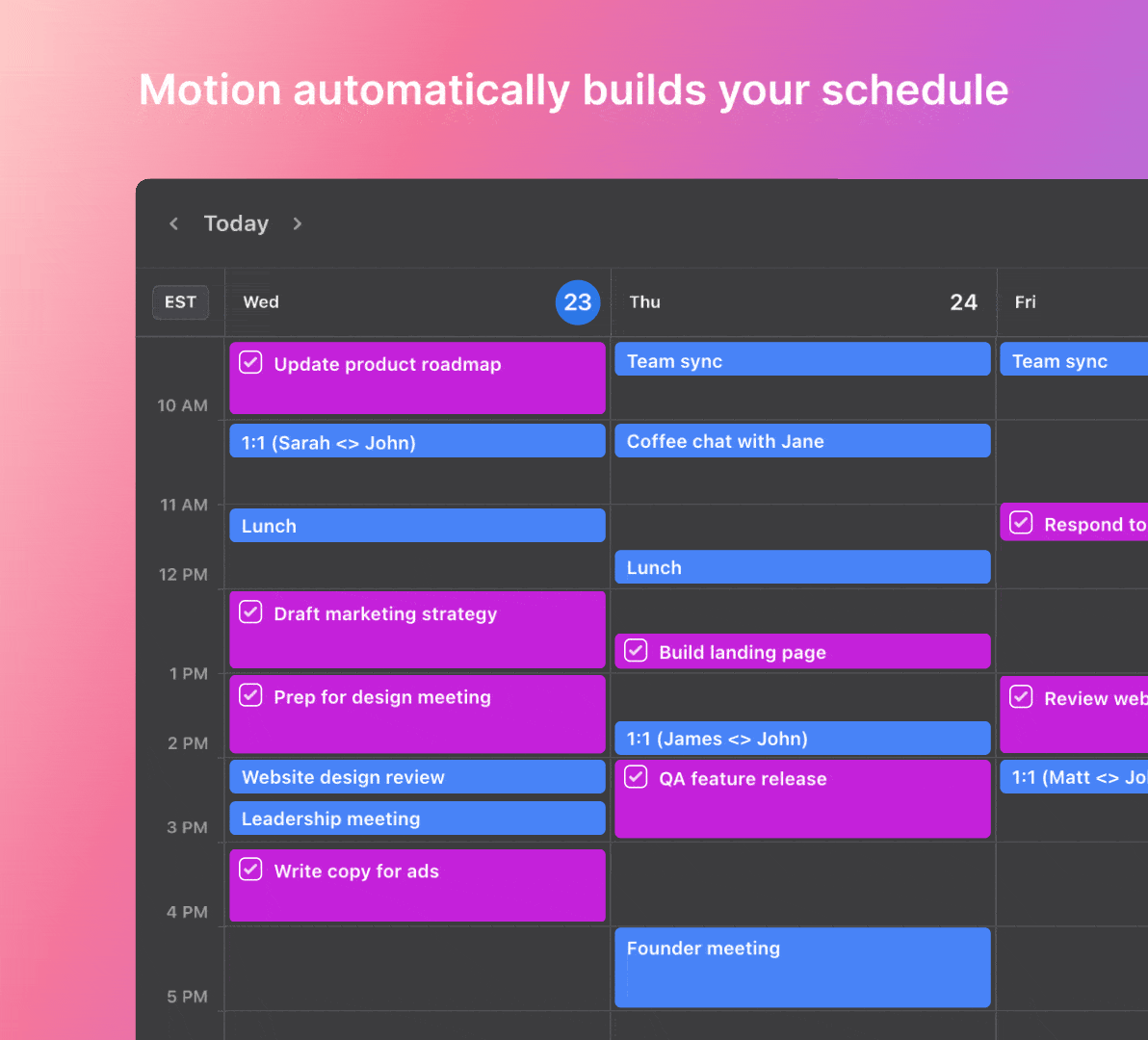
Helping you schedule, arrange, and rearrange work based on urgency and availability, Motion’s machine learning algorithms make sure everything fits in, so you never miss a deadline and nobody feels overworked.
How Motion benefits small businesses: Small businesses are balancing many jobs simultaneously. Most work management tools require a lot of admin that eats into your task time. Motion organizes your team's schedules and updates everyone for you. Instead of wasting time and brainpower on who should do what next, you can focus on more important tasks while Motion does the heavy lifting.
Pros
- AI-powered scheduling and schedule adjustments for optimal workflows
- Centralized communication and automated updates to keep everyone on track
- Meeting Assistant to streamline meetings across distributed teams
- Over-commitment alerts to prevent team burnout
Cons
- Better suited to small teams over large enterprises
Pricing: Motion costs $12 monthly for each team member and $19 monthly for individuals.
2. Smartsheet: Best for spreadsheet-style work management
Smartsheet is a versatile work management platform with a spreadsheet-style interface. While known for its enterprise capabilities, it scales well for small teams.
With many integrations and collaboration tools, it unites people, processes, and technology on a centralized platform.
How Smartsheet benefits small businesses: Just because your business is small doesn’t mean your workflows are straightforward. If you’re handling complex workflows, Smartsheet can simplify these operations by automating tasks, project monitoring, and resource management. If you’re already used to managing your tasks and time in traditional spreadsheets, Smartsheet is easy to flip over to, but it has far more functionality to streamline workflows.
Pros:
- Easy to collaborate and share docs in lots of different ways
- Sheets are intuitive to use
- Varied views and generous storage in low-priced tiers
Cons:
- Feature overload for straightforward small businesses
- Only two sheets in the free version
Pricing: Smartsheet has a free tier, and paid plans start at $7 a month.
3. Hive: Best for collaborative teams
Hive focuses on customization, flexibility, and team collaboration. It’s an rounded offering that helps teams manage projects, automate workflows, and work together seamlessly in one place.
With various views, connectable action cards, and easy feedback processes, Hive helps teams cooperate on projects and improve the process.
How Hive benefits small businesses: For teams reliant on heavy collaboration, Hive offers various ways to communicate and work together on tasks. Teams have access to action card comments and tagging. Built-in chat, video calls, intake forms, and Hive notes for documenting meetings. Teams can also work on goals and track task progress in the platform.
Pros:
- Range of project views and customizable dashboards
- Lots of automation features
- Flexible ways to collaborate
Cons:
- Big range of features can be overwhelming
- Some users complain that features are buggy and clunky
Pricing: Hive has a free basic package, with paid packages starting at $5 a month per user.
4. Trello: Best for basic workflow management
Trello is a user-friendly collaboration tool for basic task management.
If you want to manage basic workflows and projects, its intuitive interface allows teams to create, assign, track, and organize tasks easily using Kanban boards, lists, and cards.
Customizable workflows, recurring tasks, and automation help streamline workflows and relieve team organization's burden.
How Trello benefits small businesses: If you’re looking to upgrade from manual task management to simple workflow management software, Trello is super easy to use. It helps teams track projects, tasks, and time effectively, allowing everyone to see their workload and timelines.
Pros:
- User-friendly interface with simple drag-and-drop functionality
- Centralizes tasks and files for easy project access
- Automations and recurring tasks reduce admin
Cons:
- Only really suited to smaller-scale projects
- Relatively expensive for its limited storage options and functionality
Pricing: Trello has a free plan; its cheapest plan is $5 per month per user.
5. BigTime: Best for budget-minded project teams
BigTime offers more than just project management features. It focuses on financial management to streamline operations and improve resource management while speeding up billing processes.
Its customizable interface, advanced reporting capabilities, and financial integrations mean it can handle all kinds of client projects while managing the budget simultaneously.
How BigTime benefits small businesses: BigTime’s broad range of features helps small businesses manage tasks, resources, and finances in one place. It can handle complex projects and straightforward workflows and offers in-depth financial reporting.
Pros:
- Customizable interface makes it versatile for different project needs
- Financial features accelerate billing and payments
- Built-in time and expense tracking
Cons:
- Heftier price compared to some basic tools
- Users need to customize the dashboard as the default dashboard isn’t very useful
Pricing: There’s no free trial or free plan. BigTime’s lowest pricing plan costs $20 per user per month.
6. Jira: Best for Agile teams
Jira is a project management platform designed with Agile teams in mind. Its customizable boards cater to Scrum and Kanban methodologies, while the reporting features offer Sprint reporting and Burndown charts.
Jira offers drag-and-drop automation, issue tracking, and auto-issue assignment to keep everything flowing without bottlenecks.
How Jira benefits small businesses: For Agile teams, Jira offers many features that cater to this work style. It’s especially suited to software development teams, with features allowing them to work through projects quickly and efficiently.
Pros:
- Robust issue-tracking capabilities
- Customizable features and reports suitable for Agile project management
- Automatic work synchronization so everyone has the latest iterations
Cons:
- Lack of collaboration features compared to other platforms
- Designed for IT teams specifically, so it is not particularly intuitive for non-tech users
Pricing: Jira has three pricing plans, each tailored to different aspects of project management. Each costs $10 a month for ten users.
Here’s what to look for in a work management tool
Still unsure which tool to go for? Consider these aspects before making your choice.
1. Affordability
Pick a tool that fits a small business budget to access your needed features without breaking the bank.
That said, consider the price of upgrading. You don’t want a tool that suddenly jumps in price for many features you won’t need. Instead, look for tools that scale incrementally or allow you to add features to your package.
2. Feature suitability
Consider the key features your team needs — whether you need real-time communication features, custom automation, unlimited storage, or specific integration capabilities.
The tool you choose shouldn’t be littered with endless, irrelevant features. Work out what'll streamline your workflows and plump for a tool that helps improve those operations.
3. Centralization
Effective tools allow you to manage all project tasks in one place while also collating documentation and conversations around those projects.
Look for all-in-one tools where you can centralize workflows.
Let’s manage your workload better
As a small business, you don’t need a hefty work management platform with all the bells and whistles. You need a tool that helps you organize your workload and keep your team on the same page.
Look for affordable and easy-to-use tools with features that match your needs. And, of course, make sure your tool simplifies workload management rather than adding another admin task to your list.
Here’s where Motion shines.
Instead of worrying about whether you’re creating an ideal schedule for your team, Motion’s powerful AI does it for you so you can concentrate on the work that counts.

After 40-odd years of working in technology, project management, media, and marketing, Brian's career and growth journey has exposed him to a wide range of niches. He brings this breadth of knowledge and expertise in his content work through enriched storytelling and original concepts that make SaaS content engaging and accessible for readers of all stripes.
